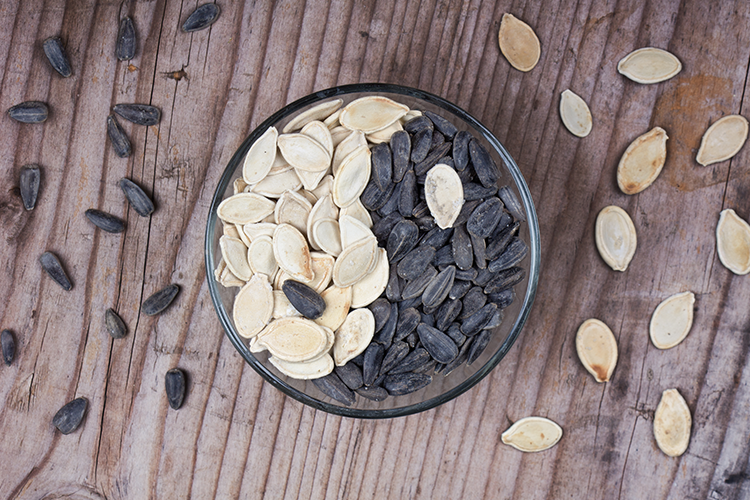Blog
The Synergy of Foods
Some things just go together. Sand and surf. Bert and Ernie. Coffee and morning. Kittens and memes.
As is the case with many foods!
Some foods taste extra good served up with a specific other. And there may be some deeper biochemical fun at play as to why certain food combos just work.
Working together
We eat all day every day. And the nutrients consumed have roles in the body. As well as genetics and any pathological influences, the effects of nutrients are modulated by digestion, absorption, and the ability for the body to use them to form other substances.1
We really are what we eat!
Foods are comprised of an array of nutrients. And synergistic activity of these nutrients can enhance the action or absorption of each other, and occur within one food, or across multiple foods – whether eaten simultaneously or within a 24-hour period.
Examples of single, whole foods packaged with the nutrients needed for enhanced action include:
- Nuts – Housed with antioxidants, which help mitigate damage from the unstable unsaturated fats they also contain, and;
- Apple and apple skin – Together these may have the most potent anti-cancer effect compared to either part alone or single nutrients an apple contains, like vitamin C.1
Synergistic activity across multiple foods include:
- Turmeric and black pepper – Curcumin in turmeric is a powerful anti-inflammatory phytochemical. A small amount of piperine, a constituent found in black pepper, consumed with turmeric can increase blood levels of curcumin – making it up to 2000% more bioavailable. Curcumin also likes to be served with a little fat.2
- Leafy greens with nuts, olive oil or avocado – Phytochemicals alpha and beta-carotene within the greens need fat to be absorbed. Maybe why spinach-smashing Popeye was such a good match with his lady Olive 😉
- Green tea and lemon – the antioxidant catechin has been found to be 5x more bioavailable in the presence of some lemon, protecting it until absorbed when travelling the digestive tract.3
How beneficial any combined effort is can depend on variety, ratios, digestion and absorption, and if they are biologically active at the cellular level.1
Eating a variety of food is particularly important. Variety over quantity is has been shown to reduce inflammation, for example.4
Specific foods and varietals contain specific constituents, which have specific effects on the body. So when recommended to eat a ‘variety of veg’, this means a mixture of roots (like carrots or ginger), stems (like celery or asparagus), leaves (like kale or spinach) and flowers (like broccoli or cauliflower).
This concept may be why we see health benefits associated with a particular dietary pattern, and can really change the way we think about nutrition. As opposed to looking at a single nutrient in isolation with respect to health or disease, we can consider the whole food delivering an array of nutrients.
Food and nutrients
In deficiency, supplementing with specific nutrients has benefit, without a doubt. But any good long-term effect can be realised when boosting nutritional status through foods consumed as close to their original, biological state.
Thinking of dietary patterns being a sum of foods and nutrients acting synergistically supports the notion as food as medicine, using food as nature’s cocktail of vitamins, minerals and other constituents, served in coordination and in a particular balance.1
Knowing what to eat with what may be complex. So first and foremost, the best way to boost the synergistic action of your foods is to eat a variety of whole foods,* eat an array of colours (cos let’s be honest, colours look cool and are good for you too!), and where possible, eat seasonally and locally grown. 🙂
By Angela Johnson (BHSc Nut. Med.)
*Whole foods such as veg, greens, fruit, herbs, spices, nuts, seeds, legumes, beans, sustainably and ethically sourced fish, seafood, meat, poultry, eggs and dairy, and some whole grains if you tolerate them.
References:
- Jacobs, DR, Gross, MD, & Tapsell, LC 2009, ‘Food synergy: an operational concept for understanding nutrition’, The American Journal Of Clinical Nutrition, vol. 89, no. 5, pp. 1543S-1548S.
- Shoba, G Joy, D Joseph, T Majeed, M Rajendran, R & Srinivas PS 1998, ‘Influence of piperine on the pharmacokinetics of curcumin in animals and human volunteers’, Planta Medica, vol. 64, no. 4, pp. 353-356.
- Green, RJ, Murphy, AS, Schulz, B, Watkins, BA, & Ferruzzi, MG 2007, ‘Common tea formulations modulate in vitro digestive recovery of green tea catechins’, Molecular Nutrition & Food Research, vol. 51, no. 9, pp. 1152-1162.
- Bhupathiraju, SN, & Tucker, KL 2011, ‘Greater variety in fruit and vegetable intake is associated with lower inflammation in Puerto Rican adults’, The American Journal Of Clinical Nutrition, vol. 93, no. 1, pp. 37-46.












